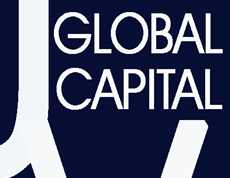In June 2025, the gold market appeared to be in the middle of an unusual transition. At that time, the most striking development was not price appreciation, but rather the surge in U.S. gold imports and the logistical and financial mechanics behind them. Arbitrage opportunities between COMEX futures in New York and spot prices in London at times reaching premiums of $50 per ounce created a strong incentive for traders to move physical gold across borders. This activity swelled COMEX inventories by more than 120%, levels not seen in decades, and contributed significantly to monthly fluctuations in the U.S. trade balance. Importers also front-loaded shipments amid speculation of possible trade or tariff policy changes, while the refining and recasting of London-standard 400-ounce bars into 100-ounce COMEX deliverable bars added another layer of complexity to trade flows.
At that stage, the broader narrative was centered around gold’s role as a distorting factor in economic reporting rather than as a price phenomenon. The differences between how the International Transactions Accounts (ITAs) and the National Income and Product Accounts (NIPAs) treat gold imports highlighted how these flows inflated the trade deficit without meaningfully affecting GDP. Safe-haven demand was acknowledged, driven by inflation, volatile equities, and geopolitical risks, but the emphasis was still on the mechanics of supply chains, arbitrage, and data discrepancies. Gold was steady and in demand, but the story was primarily technical.
By September 2025, the market picture looks dramatically different. The narrative has shifted from technical arbitrage to outright price momentum, with gold setting new records above $3,500 and briefly touching $3,700 per ounce. This represents more than a 35% year-to-date gain, far outpacing equity benchmarks such as the S&P 500. The drivers of this rally are rooted in macroeconomic conditions: weaker labor market data, with only 22,000 jobs added in August and unemployment rising to 4.3%, has fueled expectations that the Federal Reserve will begin cutting rates in the near term. The probability of a rate cut at the September meeting is priced above 90%. Meanwhile, the U.S. dollar has depreciated by approximately 10% in 2025, removing one of gold’s key headwinds and reinforcing its role as a store of value.
Investor participation has accelerated across multiple channels. Central banks remain net buyers, with Poland targeting gold to comprise 30% of reserves, Russia continuing to accumulate, and El Salvador recently adding $50 million worth of bullion. Institutional flows have also been strong: gold-backed ETFs have attracted significant inflows, while the World Gold Council has launched a “digital gold” initiative in London aimed at modernizing trading infrastructure in a $900 billion market. Retail demand has been supported by both geopolitical anxiety and skepticism about the durability of fiat currencies in an environment of persistently high debt levels.
On the supply side, the longer-term picture appears constrained. S&P Global Market Intelligence data show that major new gold discoveries remain scarce. Between 1990 and 2024, 353 deposits totaling roughly 3 billion ounces were identified, but additions in recent years have been minimal. Only six new deposits have been discovered since 2020, with none qualifying among the largest 30 in history. Moreover, the average size of new discoveries has declined materially, from 7.7 million ounces in the 2010s to just 4.4 million ounces in the early 2020s. Exploration budgets reflect this trend: grassroots exploration accounted for 50% of budgets in the mid-1990s but has fallen to just 19% today, with overall spending contracting in both 2023 and 2024.
Despite these challenges, financing for gold companies has strengthened. Junior and intermediate miners raised $2.42 billion in July 2025, the highest monthly total in four years. This surge reflects investor appetite for gold exposure in both equity and project development form. Notably, Aura Minerals completed a $218 million follow-on offering to fund acquisitions and development projects in Brazil and Guatemala, underscoring that capital is available for companies positioned to benefit from elevated prices. Specialty commodities such as rare earths also attracted strong financing, but the spotlight remains squarely on gold.
Sources:
https://www.metalsdaily.com/news/gold-news
https://www.metalsdaily.com/live-prices/gold
Disclaimer: This content is provided for informational and educational purposes only and does not constitute investment advice, a recommendation, or an offer to buy or sell any security, commodity, or financial product. Any companies, securities, or financial instruments mentioned are presented as examples of market trends or innovation and are not investment recommendations. All opinions and market commentary expressed are current as of the date of publication and are subject to change without notice. This content may include speculative views, forward-looking statements, or projections, which are based on assumptions and publicly available information. Such statements are inherently uncertain and should not be relied upon to make investment decisions. Investing involves risk, including the possible loss of principal. Markets can be volatile, and individual investments may fluctuate in value. Past performance is not indicative of future results. Please consult a JV Global Capital qualified investment adviser to determine whether any strategy or investment is appropriate for your personal financial situation.






